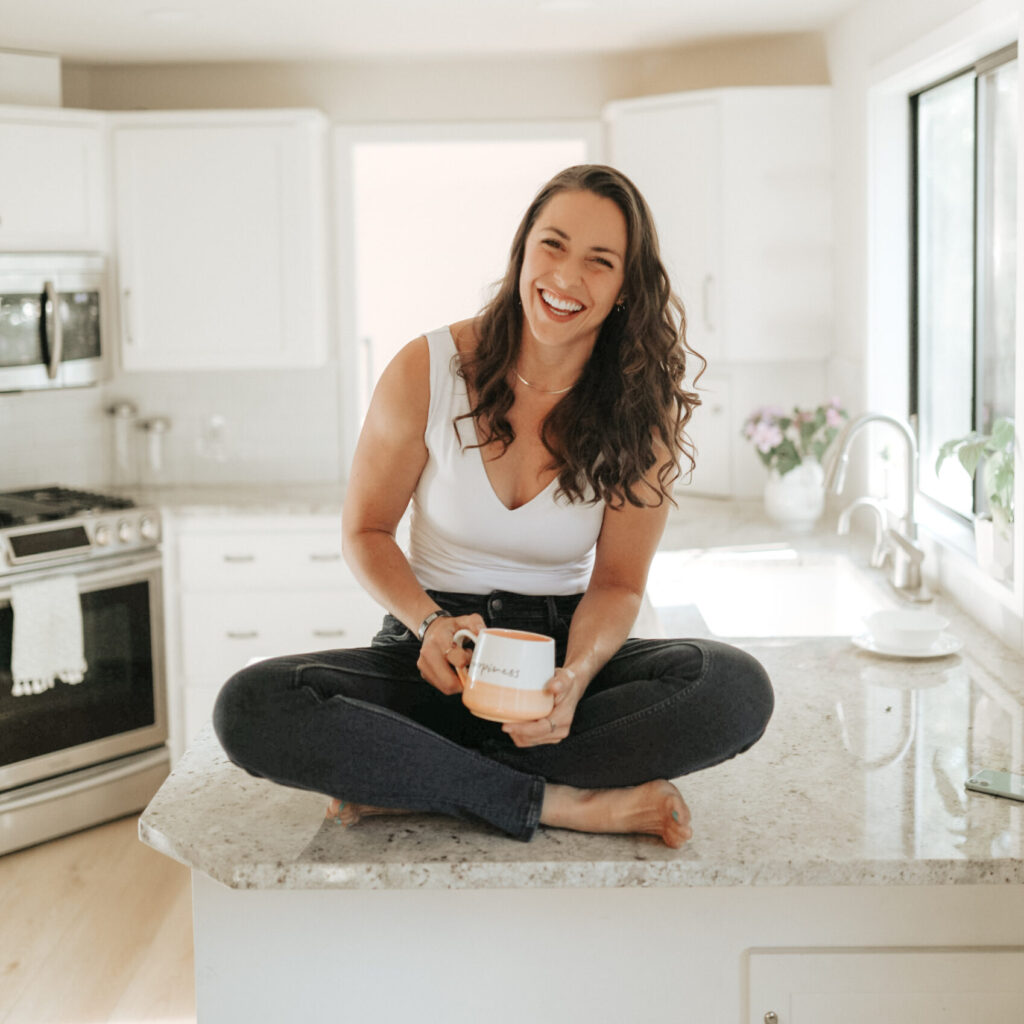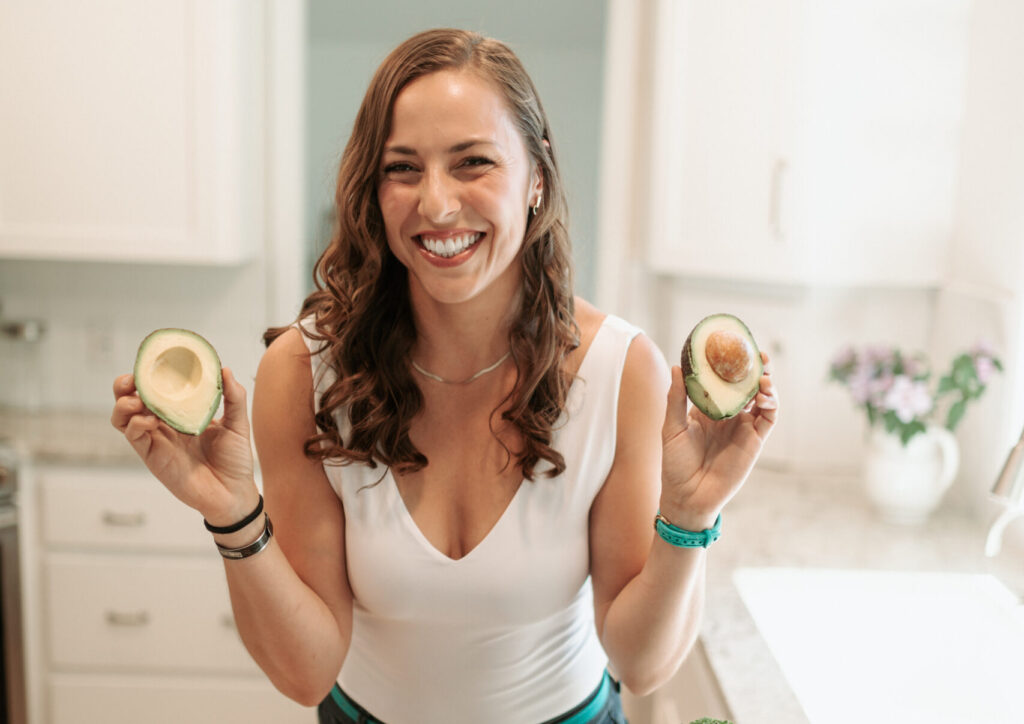Do you HAVE to weigh your food?
When a carpenter wants to build a beautiful house, does he HAVE to measure his wood?
I mean…no…but he’s probably not going to get the same results.
Extreme, but comparable.
Similar to tracking, the scale is an educational TOOL that allows you to learn what actual amounts of food equate to.
If you’ve ever measured out a tablespoon of peanut butter…then weighed it. You know what I mean.
It’s depressing.
Volume measurement amounts in cups, TBSP or tsp on nutrition labels are just estimates, which is why they also include the actual weight of the serving size in parentheses next to it.
Once you start weighing out serving sizes and seeing realistic amounts, it’s no wonder that people underestimate their food intake by 20-40%.
HOW TO WEIGH DRY FOOD/GRAINS
I suggest using a measuring cup or something you would normally measure your food in so that you can see the relativity between the volume measurement and weight.
When measuring foods like oats, quinoa, rice, beans, etc. obviously you gain volume – here are some easy conversions, also listed in the nutrition guide:
Oats: 1 cup dry = 2 cups cooked
Rice, Quinoa & Beans: 1 cup dry = 3 cups cooked
Lentils: 1 cup dry = 2.5 cups cooked
Once cooked, divide out according to per-meal goals.
FOOD/CONDIMENTS OUT OF A JAR
MEAT COOKED VS RAW
Meat portion & nutrition facts are always done in RAW form.
Cooking meat removes about 1/4 of the weight in moisture 4 oz raw meat = 3 oz cooked
4oz cooked meat = 5.5 oz raw = true nutrition facts
The best way to do this will depend on how you’re making whatever product.
Here are some tips:
Ground beef/turkey/chicken: Weigh or use whole package serving size then divide into however many servings get you to your desired meal serving.
Example: You want 4 oz at each meal and have 2 lbs of meat (16 oz)- divide into 8 equal servings.
Chicken breast/steak/shrimp/fish: Cook however, chops and weigh into desired serving sizes using cooked adjustments.
MAKING A SANDWICH/WRAP
Don’t get me wrong – this can be time-consuming. But as I said before, this is a TOOL, it’s a LEARNING PROCESS, and before you can run (live a balanced and free food life) you have to learn to crawl.
My suggestion:
Week 1-3: Set aside time to prep / measure / weigh main meals for the week.
Week 2-4: Start to weigh usual snacks (as applicable), cereals, and other things not necessarily in main meals but that you eat semi-regularly.
This will take about 2-3 months to get comfortable with if you’re using it on a sporadic basis (2-4 times per week) but I can promise you, this knowledge is INVALUABLE.
Here is a link to a cheap food scale (round is best, your plate won’t block the display;) https://amzn.to/3L9O21M

Women’s Functional Nutritionist & Fitness Specialist along with CEO of Elysian Women’s Wellness.
God, family, fitness – in that order. Fitness isn’t my job, it’s my passion. My favorite things include traveling the world, being a mama and making a difference.
14 years of experience in the wellness industry has brought me to an understanding that when you’re ready – you’ll do it. So when you are, we’re here to keep you simply well.
The last “program” you’ll ever buy. Your individualized training & nutrition plan that teaches the why & how to create lasting changes with me by your side every step of the way!

Error: No feed found.
Please go to the Instagram Feed settings page to create a feed.
Level 0, 1, 2 & 3: Level Up your workouts with beginner to advanced plans designed with a focus lift each month, progressive overload, instructional videos & all inclusive training & nutrition guides.
Copyright ©2025. Gamechanger
A BRANDT CREATIVE CO. TEMPLATE. Trusted by Wimgo.